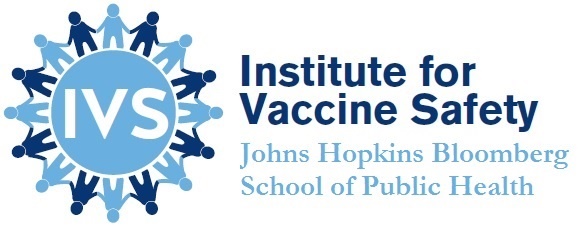Vaccine Preventable Diseases
Haemophilus influenzae type b
ACIP Recs | Disease | Vaccine | References | VIS | WHO modules | Archives
Advisory Committee on Immunization Practices (ACIP) Recommendations
Infants
- All infants without contraindications should receive the conjugate Hib vaccine series; either as 3 doses of PRP-OMP (trade name: PedvaxHIB®) or as 4 doses of PRP-T (trade names: ActHIB®, Hiberix®; also included in the DTaP-Hib-IPV combination vaccine Pentacel®).
- Doses of Hib vaccine should be given at least 4 weeks apart, with the first dose administered at a minimum of 6 weeks of age.
- Doses are generally recommended to be given at 2 and 4 months of age, and for the PRP-T vaccines, 6 months of age as well.
- A booster dose should then be given a minimum of 8 weeks after the previous dose, generally between 12-15 months of age [1-3].
Children, Adolescents and Adults
- Although Hib vaccine is generally not recommended for those over 59 months of age, there are exceptions for certain persons at increased risk; for example, previously unimmunized asplenic patients should receive one dose of Hib vaccine, and recipients of a hematopoietic cell transplant should be given the full 3 dose series beginning 6-12 months after the transplant regardless of their vaccination history [3].
For more information
Disease
Haemophilus influenzae is an aerobic gram-negative coccobacillus bacterium with encapsulated typeable strains and unencapsulated nontypeable strains. There are six serotypes of encapsulated Hib, identified by their antigenically and biochemically distinct polysaccharide capsules. Serotype b (Hib) was responsible for 95% of Haemophilus influenzae disease prior to vaccine introduction. Hib generally enters the body via respiratory droplets through the nasopharynx but can cause conjunctivitis or cellulitis from entry via the skin. Bacteremia occurs when Hib organisms invade the bloodstream and cause infection elsewhere. The most common clinical feature of invasive Hib disease is meningitis, which can then lead to residual hearing impairment, neurologic sequelae, or even death. Fatality rates range from 3%-6% for Hib meningitis, even despite appropriate antimicrobial therapy. Invasive Hib disease accounted for 50-65% of cases of meningitis prior to introduction of Hib vaccine. Other clinical features of Hib disease include otitis media, epiglottitis, pneumonia, septic arthritis, cellulitis, osteomyelitis, and bacteremia. Hib disease is uncommon after 5 years of age, presumably due to acquisition of immunity either from asymptomatic Hib infection or from exposure to other organisms with antigenic structures resembling the capsule of Hib (i.e. cross protection). Incidence of Hib has decreased by over 99% with the introduction of Hib vaccines [1].
Vaccine
There are two conjugate Haemophilus influenzae type b (Hib) vaccines used in the United States: PRP-OMP and PRP-T. Hib polysaccharide is chemically bound to a non-Hib protein carrier, creating a more effective antigen and therefore stimulating a better immune response, particularly in infants, than with the plain polysaccharide. PRP-OMP uses meningococcal group B outer membrane protein and is produced by Merck under the name PedvaxHIB®, or as part of the Hib-Hep B combination vaccine (Comvax®). PRP-T uses tetanus toxoid protein and is manufactured by Sanofi Pasteur under the name ActHIB® (or as part of the DTaP-Hib-IPV combination vaccine Pentacel®) and by GlaxoSmithKline under the name Hiberix®. PedvaxHIB® requires a two dose primary series followed by a booster. ActHIB® requires a three dose primary series followed by a booster, as mentioned above. The combination vaccines mentioned above should be administered according to the recommendations for the individual vaccines included in them [1].
The Hib-MenCY-TT combination vaccine MenHibrix® was discontinued in the US in 2016 [4]. The Hib-Hep B combination vaccine Comvax® was discontinued in the United States in 2014 [5].
Vaccine Effectiveness:
Hib vaccines are very immunogenic in infants. Over 95% of primary series recipients develop immunity, and clinical efficacy has been estimated at 95-100% [1].
Vaccine Safety:
Minor local reactions such as pain, redness or swelling occur in approximately 5-30% of Hib vaccine recipients and usually resolve within a day or two. Systemic reactions such as irritability and fever are infrequent, and serious adverse reactions are rare [1].
Contraindications and Precautions:
Severe allergic reaction (e.g. anaphylaxis) to a previous dose or vaccine component is a contraindication to further Hib vaccination. Current moderate to severe acute illness is a precaution to any vaccination [1].
Considerations in Pregnancy:
Hib vaccines are not routinely recommended in pregnancy.
References
1. Epidemiology and Prevention of Vaccine-Preventable Diseases. Washington D.C.: Centers for Disease Control and Prevention; 2015.
2. Briere EC. Food and Drug Administration Approval for Use of Hiberix as a 3-Dose Primary Haemophilus influenzae Type b (Hib) Vaccination Series. MMWR Morbidity and Mortality Weekly Report 2016;65:418-9.
3. Briere EC, Rubin L, Moro PL, Cohn A, Clark T, Messonnier N. Prevention and control of haemophilus influenzae type b disease: recommendations of the advisory committee on immunization practices (ACIP). MMWR Recommendations and reports: Morbidity and mortality weekly report Recommendations and reports 2014;63:1-14.
4. GlaxoSmithKline. MenHibix Discontinuation Notice.
5. Immunization Action Coalition. Merck discontinues production of Comvax vaccine (Hib-HepB). IAC Express 2014 [cited 2018 March]; Issue 1136. 2016.


